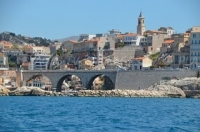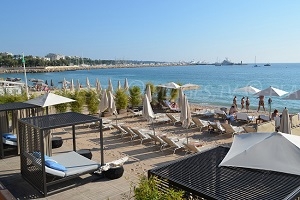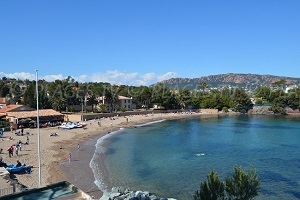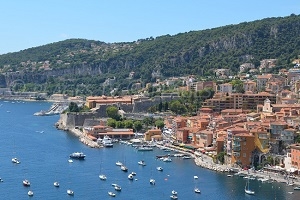The Camargue: A vast wilderness with beautiful sandy beaches
From the Rhone delta to the Mediterranean, from Aigues-Mortes to the Crau plain, the territory of the Camargue is a vast natural space where a thousand colors merge and the multitude of landscapes enchant tourists from around the world. The beaches of the Camargue are some of the wildest beaches in France.
It is customary to divide it into three parts, the Petite Camargue, the Grande Camargue and the Plan de Bourg, each finding its territory between the different branches of the Petit and Grand Rhone.
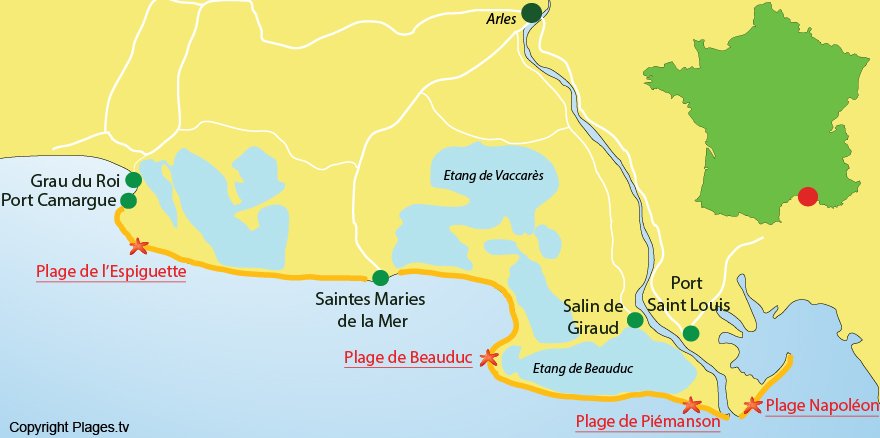
Map of different stations in the Camargue
Some of the municipalities that make it up are true treasures, preserving the traditions of this Provencal land such as the Saintes-Maries-de-la-Mer, a famous pilgrimage destination, allowing you to discover a terroir as is the case in Grau-du-Roi or offering the opportunity to enjoy vast sandy beaches around Salin-de-Giraud and Port-Saint-Louis.
The Camargue is mainly discovered in terms of nature, the place being inseparable from the marshes and the sansouire. It is in the Basse-Camargue that these emblematic landscapes are found where salt is so present that we observe in places the appearance of real white layers during the summer. The soft marshes and reed beds, on the edges of the Rhone in the Haute-Camargue are a place conducive to the development of numerous plant species.
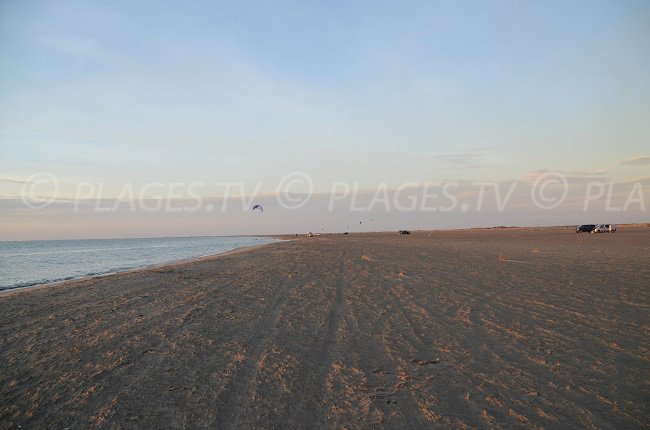
Beauduc at the end of the day in winter
Arles is the main city of the Camargue. It has a rich antique heritage and private mansions rub shoulders with classified monuments such as the Saint Trophime cloister and the Archbishop's palace. While it is full of charm, visitors enjoy heading about forty kilometers away to Salin-de-Giraud, a small village with unique architecture. Originally designed to accommodate workers from nearby factories, the checkerboard village has been very well restored. However, there are only a few seasonal rentals, so it can be quite difficult to find accommodation in the area (historically, until the summer of 2015, people would set up directly on the beach with their caravan - a vast free campsite - now this is forbidden).
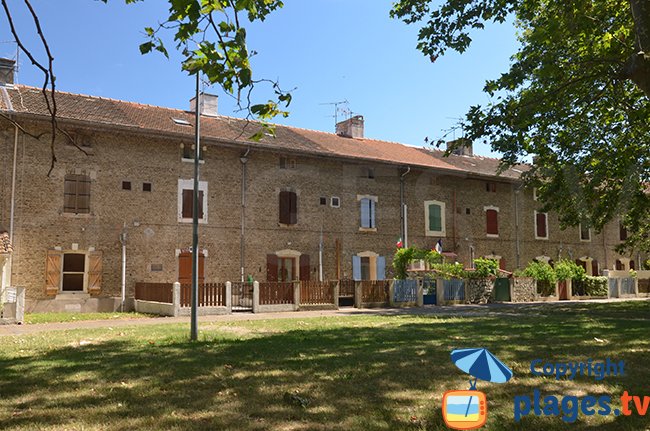
The village of Salin de Giraud
Today, its large Piémançon beach, also known as the Grande Plage d’Arles, is the pride of the place. The southern ponds of Vaccarès are just next door, a dream opportunity for bird lovers to observe a hundred species and especially flamingos, thrive in this preserved place.
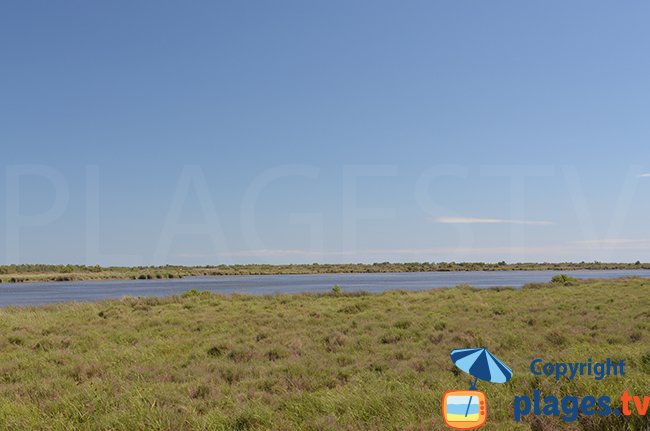
The landscapes between Piémançon and Salin de Giraud
Nearby is the large beach of Beauduc which attracts many holidaymakers. Difficult to access (you have to take a track almost 7 km long), it is reputed as one of the wildest beaches in the south of France. In the summer it becomes a vast free campsite. But be careful, since 2012, due to numerous abuses, rules have been put in place. Some areas are closed to traffic (we have seen real 4*4 races on the sand ...) and camping is regulated. All around, many cycle paths have been arranged allowing the most adventurous to continue their discovery to the Saintes-Maries-de-la-Mer.
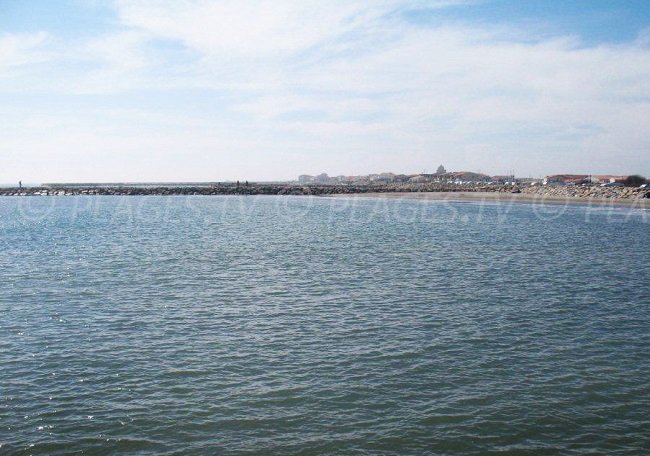
The Saintes Maries de la Mer
The Saintes Maries de la Mer, both a seaside resort and a place of pilgrimage since the 19th century, the town is located in the National Reserve, on the edge of the Vaccarès pond. One of the activities that most enchants tourists is bull racing. They can be observed from the herds or the small arenas scattered in the town and watch the training of the young bulls. You can also choose to visit the Marais du Vigueirat that can be reached by the ferries that ply the Rhône. On horseback, head for the Palissade estate, between ponds and lagoons, and on foot towards the many beaches of the town including those of Amphores or even the Arenas, a well-known place for kitesurfers.
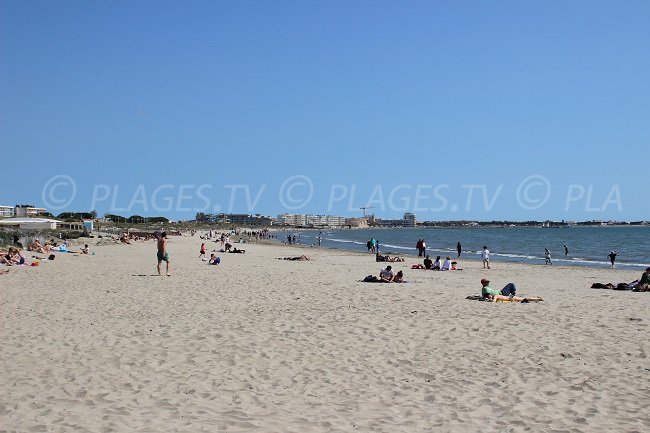
Beach in the center of Grau du Roi in spring
Bordering Petite Camargue, Le Grau-du-Roi is also a must-see. An authentic destination deeply connected to the local region, it offers visitors its small fishing port and a succession of dunes from the Boucanet to the Espiguette lighthouse. The Seaquarium is the perfect place to take both young and old eager to discover hundreds of fish species and enjoy the shark aquarium, guaranteed excitement! Next to it, Port-Camargue marks the entrance to the wild Camargue with its vast Espiguette beach that stretches for several kilometers.
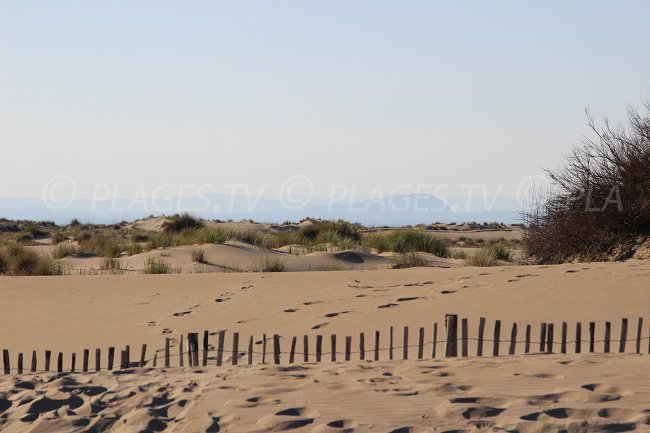
Dunes near the Espiguette beach of Port-Camargue
Finally, at the mouth of the Grand Rhône, there's Port-Saint-Louis, the "end of the world" town, displaying its traditions, such as the Provencal jousting played on water, and the beauty of its cabanons, the fisherman's houses with walls whitewashed with lime. Various water activities and the three beaches of the municipality promise unforgettable moments for everyone, but it's the Napoleon beach that offers the most wild environment.

